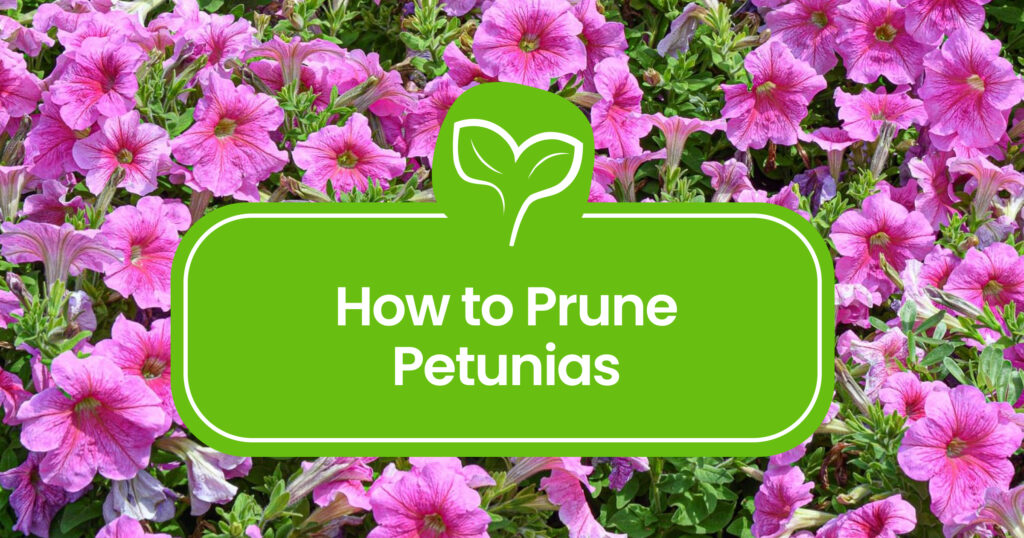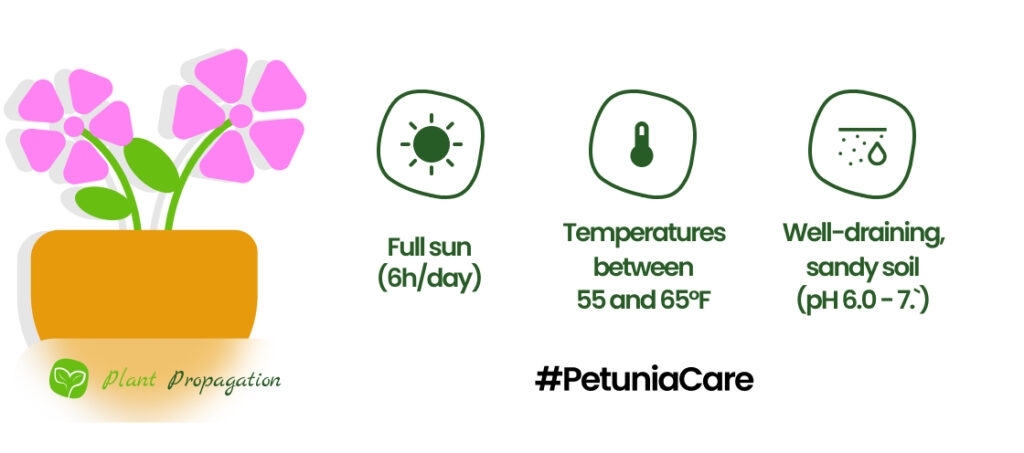
Petunias are like the celebrities of the flower world. They bring vibrant colors, lush blooms, and a touch of elegance to any garden or hanging basket. But just like celebrities need a stylist to keep them looking their best, petunias need some pruning to shine their brightest. Pruning might sound daunting, but fear not! In this article, we’ll walk you through the ins and outs of how to prune petunias like a pro.
Why Should You Prune Petunias?
Okay, let’s start with the million-dollar question: Why should you even bother pruning your petunias? Well, here’s the deal – pruning petunias isn’t just about aesthetics (though they do look stunning when well-pruned). It’s also about promoting healthier, happier plants.
When you prune your petunias, you’re basically giving them a spa day. Here’s what it does:
- Encourages More Blooms: Petunias have this incredible talent for producing an abundance of flowers. But sometimes, they get carried away, and their energy goes into making too many flowers. By pruning, you help them focus their energy on the existing blooms, resulting in larger, more vibrant flowers.
- Keeps Them Tidy: Petunias can be a bit wild, growing in all directions. Pruning helps maintain a neat, compact shape, making them perfect for hanging baskets, containers, or garden beds.
- Prevents Disease: Removing dead or diseased growth not only looks better but also prevents the spread of diseases within your petunia plant.
- Stimulates Growth: Pruning encourages the growth of new shoots, which can lead to a bushier, more robust plant.
When Should You Prune Petunias?
Timing is key when it comes to pruning petunias. You don’t want to do it too early or too late; otherwise, you might upset your lovely flowers. You should prune your petunias lightly every two weeks in the growing season (early July – mid-September).
Wait until your petunias have had a chance to establish themselves after planting. Once they’ve grown a few inches and started to flower, it’s prime pruning time.
Don’t prune too late into the growing season, as you risk cutting off new buds and preventing further blooms.
The Tools You’ll Need
Now that we’ve covered the “why” and the “when,” let’s talk about the “what” – the tools you’ll need to get the job done. Fortunately, you won’t need a whole shed full of fancy equipment. Here’s what you’ll need:
- Pruning Shears: A pair of sharp, clean pruning shears is your best friend for this job. They’ll make clean cuts and prevent damage to your petunias.
- Gloves: A pair of gardening gloves will protect your hands from scratches and any potential irritants on the plants.
- Sanitizer: It’s always a good idea to have some hand sanitizer or rubbing alcohol on hand to clean your pruning shears between cuts. This helps prevent the spread of diseases from one plant to another.

How to Prune Petunias Step-by-Step
- Step 1: Inspect Your Petunias Start by closely examining your petunias. Look for any dead or yellowing leaves, spent flowers, or leggy growth. These are the prime candidates for pruning.
- Step 2: Deadheading Petunias: Remove Dead and Spent Flowers Using your pruning shears, snip off any dead or spent flowers. Make your cuts just above a set of healthy leaves or a bud. This encourages new growth and prevents your petunias from putting energy into seeds.
- Step 3: Trim Yellow or Leggy Growth: If you spot any yellowing or leggy growth, don’t hesitate to trim it back. This will help maintain a compact and bushy appearance. Again, cut just above a set of healthy leaves or buds.
- Step 4: Shape and Thin as Needed: To maintain an attractive shape, you can also trim the tips of your petunias. This encourages branching and results in a fuller, more lush plant. If your petunias are getting too crowded, thin them out by removing some of the older stems at ground level.
- Step 5: Clean Your Pruning Shears: Between cuts, it’s important to clean your pruning shears with hand sanitizer or rubbing alcohol to prevent the spread of diseases.
- Step 6: Water and Fertilize: After you’ve finished pruning, give your petunias a good watering to help them recover. You can also provide a light dose of balanced fertilizer to support their growth and blooming. This Petunia Feed on Amazon is a pretty good choice.

Post Pruning Care for Petunias
Congratulations on successfully pruning your petunias! But our job isn’t quite done yet. Post-pruning care is just as important to ensure your petunias thrive and dazzle.
1. Water Wisely: After pruning, give your petunias a deep watering. This helps them recover from the pruning shock and encourages new growth. Water at the base of the plants to keep the foliage dry, preventing potential diseases.
2. Feed Them Right: A little extra nutrition goes a long way. Consider using a balanced liquid fertilizer every 2-4 weeks during the growing season. This helps replenish nutrients your petunias may have lost during the pruning process.
3. Deadhead Regularly: Even after pruning, continue to deadhead your petunias by removing spent flowers. This ongoing care will keep your plants looking fresh and encourage continuous blooming.
4. Monitor for Pests and Diseases: Keep an eye out for any signs of pests or diseases. Early detection and treatment are essential to maintaining the health of your petunias. If you notice any issues, take action promptly.

Summary
Pruning petunias may seem like a daunting task, but it’s actually quite simple once you get the hang of it. Pruning not only enhances the beauty of your petunias but also promotes their overall health and vitality. So, grab your pruning shears, put on your gardening gloves, and give your petunias the spa day they deserve!
Remember, it’s typically best to perform a light pruning every 1-2 weeks during the growing season, especially in late spring and early summer. This regular maintenance helps keep your petunias in top shape, encourages continuous blooming, and prevents them from becoming too leggy or overgrown. Happy pruning!
Frequently Asked Questions
When pruning petunias in pots, use a gentle touch and focus on removing long, leggy stems. Avoid cutting more than one-third of the plant’s stems in one go.
Can leggy petunias be cut back?
Absolutely! If you notice leggy growth between your scheduled summer prunings, go ahead and trim it off whenever you see it. This proactive approach helps maintain the plant’s health and appearance over a more extended period.
Where do you cut when deadheading petunias?
When deadheading, be sure to remove the entire spent bloom, including its base, where the seeds are located. Simply plucking the petals won’t cut it.
When should I prune petunias?
You should prune your petunias lightly every two weeks in the growing season (early July – mid September).
How do I prune petunias for more flowers?
Give your plant a gentle pruning in May and June after its vigorous growth. To promote flower growth, trim approximately one-third of the branches, paying attention to those that have become long and straggly.
How many times can I cut back petunias?
To ensure continuous summer blooms for your petunias, prune your plant about three times during the season. Be mindful to strike a balance between maintaining your plant’s appearance and promoting fresh growth.
